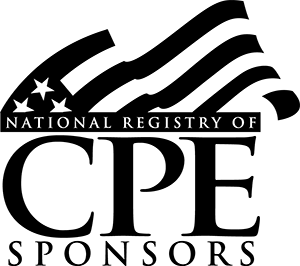What Sponsors Need to Know
I RECENTLY RECEIVED MY COMPLIANCE AUDIT FINDINGS REPORT. ONE OF THE AUDIT FINDINGS STATED THAT I HAD INADEQUATE SUPPORTING ATTENDANCE DOCUMENTATION. WHAT DOES THIS MEAN?
Standard No. 16 of the Statement on Standards for Continuing Professional Education (CPE) Programs requires sponsors to monitor individual attendance at group programs to assign the correct number of Continuing Professional Education (CPE) credits. NASBA reviews attendance monitoring procedures and supporting attendance documentation to verify the amount of CPE credits awarded. Standard No. 16 also states that a participant’s self-certification of attendance alone is not sufficient.
What’s so important about documenting CPE credits and providing supporting attendance documentation? During a state board audit of an individual’s CPE records, the certificate of completion issued by the sponsor is typically the only document reviewed by state board staff. When the certificate of completion omits key information such as the NASBA sponsor identification number, the total amount of CPE credits earned or NASBA field of study classification, state board staff may deny the CPE credits listed on the certificate. This could cause the CPA to have a shortage in CPE credits, and possibly have the board place the CPA into a disciplinary process for failure to meet mandatory CPE requirements.
When NASBA reviews the attendance procedures and supporting documentation against the CPE credits reported on the certificate, the documentation confirms or raises concerns regarding the attendance monitoring procedures and documentation processes. Since the attendance monitoring procedures or lack of procedures and/or inadequate documentation directly impacts the individual’s CPE credits, non-compliance in these areas typically results in a failed audit outcome.
 Let’s look at a few common attendance and supporting documentation findings. In each scenario, the finding is briefly summarized and followed by NASBA’s explanation as to how to remedy the deficiency.
Let’s look at a few common attendance and supporting documentation findings. In each scenario, the finding is briefly summarized and followed by NASBA’s explanation as to how to remedy the deficiency.
Scenario 1
The supporting documentation submitted for attendance monitoring was an evaluation form. NASBA was unable to determine how the evaluation form provided adequate attendance monitoring. In this situation, NASBA’s expectation is to review a copy of the evaluation in conjunction with sponsor verification of attendance. An evaluation form alone is not an adequate attendance monitoring procedure.
Scenario 2
The supporting attendance documentation consisted of an attendee list. It is not clear as to how this list is used to monitor attendance. In this situation, the supporting attendance documentation contained little explanation as to how the attendee list was used as a monitoring procedure. The sponsor should clearly explain the attendance monitoring policies and how the documentation submitted to NASBA supports those policies.
Scenario 3
Sponsor offers continuing education credits for multiple professions, such as the legal profession. Sponsor’s attendance policy references staff-monitored CPE sessions. However, the attendance verification form appears to allow a participant to self-report CPE and/or Continuing Legal Education (CLE) credits. In this situation, NASBA’s expectation is to review the self-certification form in conjunction with sponsor verification of attendance. Self-certification alone is not an adequate attendance monitoring procedure.

